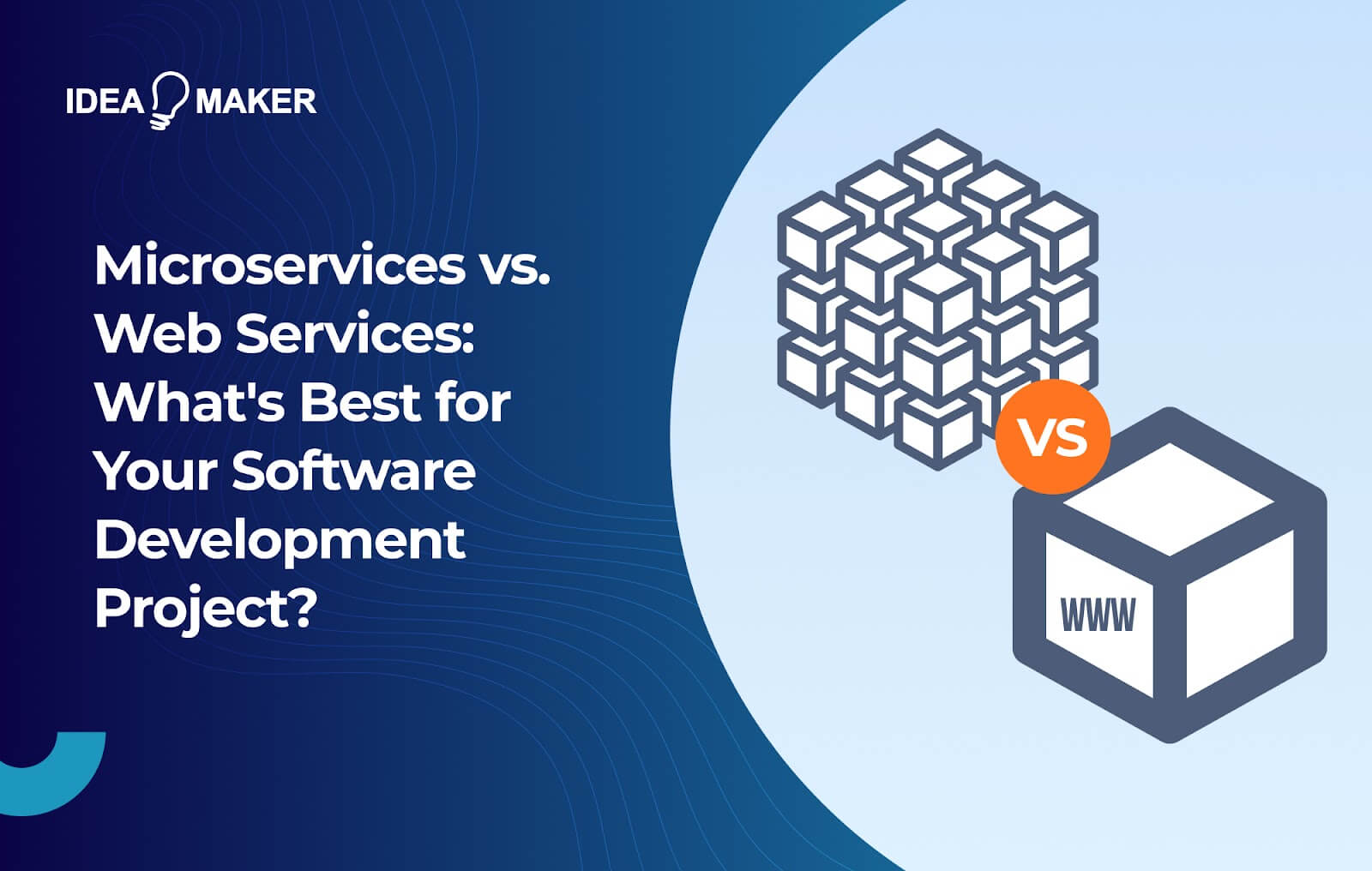People often evaluate microservices vs. web services in modern application development as they have become popular concepts highly relevant to each other. Nonetheless, each has its differences in architecture, performance, scalability, and usability. This article aims to discuss each concept in detail with its pros and cons to help you assess microservices vs. web services. It will help you find the best fit for your software development project.
What are Microservices?
Developers maintain the software application as one big component in traditional monolithic architectures. In contrast, microservices architecture consists of loosely coupled and independent services that are executed in a containerized environment. The communication between those services happens through APIs, allowing integration with different applications. Microservices are particularly useful for delivering large and complex applications rapidly and reliably.

Pros
Easy to Scale
Since microservices are independently running services, it is easy to scale each service without affecting the other services. This independent scalability allows the application to meet fluctuating demands quickly and efficiently. It also allows to right-size the application infrastructure of necessary microservices rather than scaling up the entire application.

Ownership by Self-Contained Teams
Microservices are small software components that belong to self-contained teams. Each microservice has only a small and less complex code than a traditional monolithic application. Therefore, these self-contained teams can easily understand, maintain, and test the functionality of the code without worrying about other components.
Easy to Deploy
Each service in a microservices architecture can be deployed independently. It allows for continuous integration and delivery as well as deploying changes faster within a shorter development lifecycle.

Higher Resiliency
When considering monolithic architectures, the failure of one component can cause the failure of the whole application. However, since microservices are a collection of independent components, the failure of one component does not impact the entire application.
Cons
Higher Initial Costs
If you currently have services or a traditional monolithic architecture, transitioning to microservices can be costly as it requires leveraging cloud infrastructure to host applications. It also involves ongoing maintenance costs and costs of hiring skilled developers.

Communications Can Be Complex
The communication between services can be complex despite the simplicity of microservices components. Especially secure communication between services can be challenging if the application consists of many services. Besides, the changes in APIs can affect most of the services.
Debugging Can Be Problematic.
Each microservice has its own log. It implies that debugging through those logs can be difficult and time-consuming if there are many different microservices.
What are Web Services?
Web services are software applications that offer different services by communicating with client applications. They use standard protocols such as HTTP or HTTPS to serve documents with other applications using messaging formats like XML or JSON. Web services commonly use object-oriented web interfaces. Developers can use different programming languages to develop web services and still communicate with the standard messaging formats.
Pros
Interoperability
Currently, organizations develop web services in different programming languages and host with different infrastructure and platforms independently of other applications. Web services enable interoperability between these different web services by standardizing how they communicate and making them technology-independent.
Faster Communication and Low Cost
The communication between web services happens via existing faster and lower-cost protocols such as HTTP, HTTPS, or SOAP. Therefore communication costs are lower than other solutions like Business-to-Business communication.
Re-usability
Like microservices, web services offer more specific functionalities, ranging from simple information retrieval to complex computations. Once you develop a web application, many parties can use it. For instance, different organizations can easily re-use it in different parts of their applications to add value to their products and services.

Cons
Cannot Guarantee the Availability
Web services offer services over the internet, and each web service can be hosted in different networks and infrastructure. Especially, a web service can be susceptible to sudden outages if it is hosted in data centers rather than cloud infrastructure. In such cases, if the application uses that web service for critical functionality, the whole functionality dependent on it can fail. Therefore, applications may require an alternative path to get or cache the data.
It Can Be Difficult to Make Changes
Several software applications can use the same web service for specific functionality. However, the requirements of any client application can change over time. Sometimes a specific client may require a slightly different change to the current functionality of the web service. Based on the requirement, sometimes it can be difficult to accommodate without impacting other client applications.
Web Services vs. Microservices: How to Choose Between the Two?
If you aim to design your next software application, you may evaluate web services vs. microservices to choose between those two. However, there are several factors to consider before selecting the right architecture for your development.

What is the Goal of Your Development?
First, clarify the main goal of your project. For example, are you developing the application to serve millions of customers in the future? Or the purpose of developing the application can be just for internal use. It is essential to consider scalability and performance if you develop it to attract a larger user base in the future. Microservices architecture will be the better choice when comparing web services vs. microservices on scalability and performance aspects for larger applications.
How Much Time/Money Do You Have?
The next important fact to consider is the timeline of your project and the available budget. Suppose your company doesn't already have the necessary infrastructure to host microservices, or you need to complete the project within a tight schedule. In that case, leveraging microservices will not be a good choice. However, if you already have the required budget and the infrastructure, microservices can be ideal for improving the overall performance of your applications.
Is Zero Downtime Critical?
If your products and services provide critical functionalities to users, the sudden unavailabilities of your application can lead to a significant loss of revenue for your company. Therefore, resilience is a critical requirement for such applications. When considering web services vs. microservices, microservices are more resilient to failures. Thus, microservices will be the go-to choice for applications with demanding resiliency requirements.
Conclusion
Nowadays, organizations rely on web services and microservices for their application development projects. However, it is better to evaluate web services vs. microservices to choose the most suitable approach. In this article, we have described the pros and cons of both microservices and web services to help you decide the best fit for your future applications developments.
Frequently Asked Questions
Let's Talk About Your Project!

Tom KwonCEO
If you're interested in discussing how we can collaborate to meet your goals and overcome challenges – whether on the technical side or the business side – I'm just a message away. Let's dive into a conversation!
Idea Maker © 2025 ● All Rights Reserved








